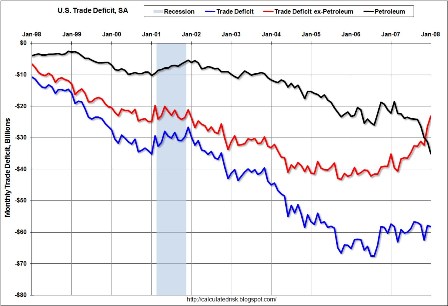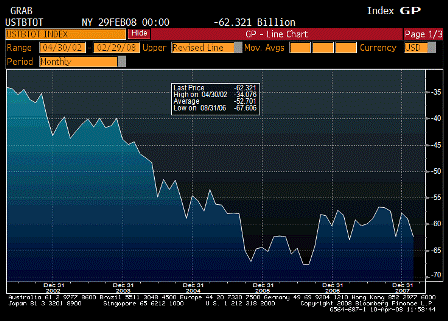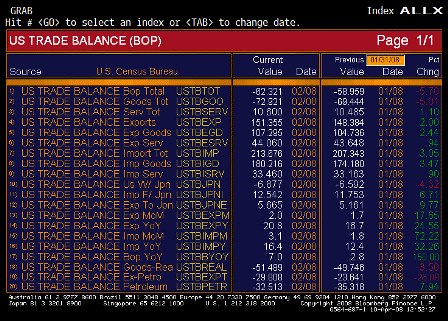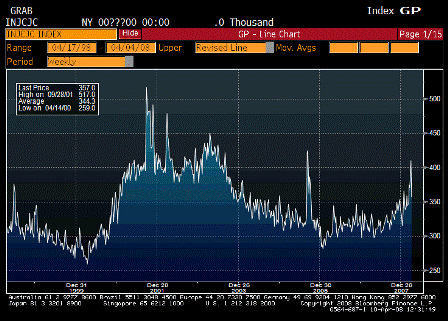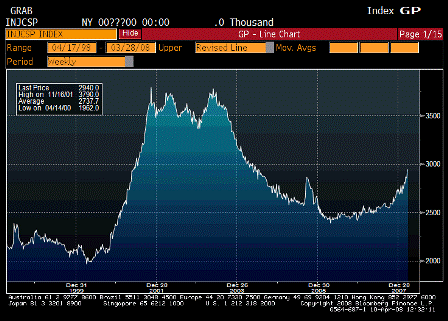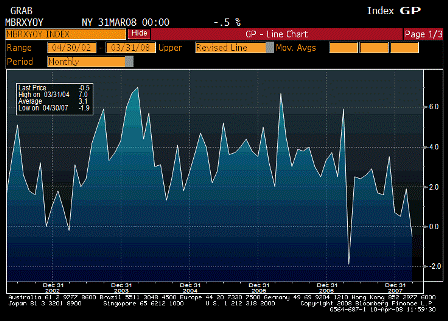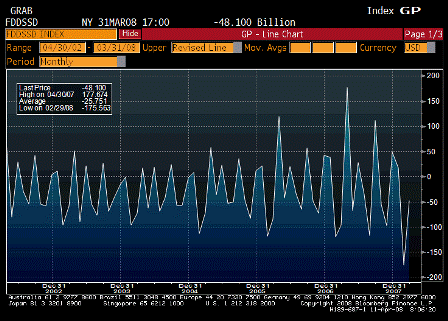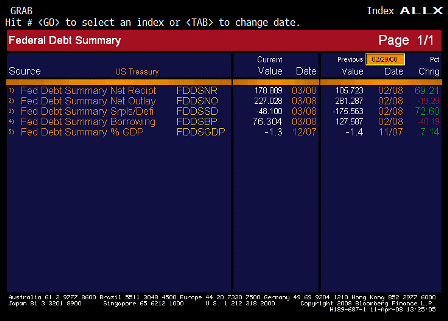While revenue growth is slowing, it is still positive.
Might be the suspected 2007 spending that was moved forward to 2008 that is helping spending increase so much and support GDP into the election. And the new fiscal package kicks in soon as well.
Government spending, this year, should top $3 trillion – still a modest percent of GDP by world standards.
Federal budget deficit at all-time high for first half
by Martin Crutsinger
The federal deficit through the first half of this budget year is at an all-time high, underscoring the pressure the budget is coming under as the overall economy slumps.
The Treasury Department reported Thursday that the deficit through the first six months of the budget year totaled $311.4 billion (euro196.2 billion), up 20.5 percent from the same period a year ago. That was the largest deficit for the first half of a budget year on record, surpassing the old six-month mark of $302 billion set in 2006.
The Bush administration, when it sent its budget proposal to Congress in February, estimated that the deficit for the whole year will total $410 billion (euro258.3 billion), putting it very close to the all-time high in dollar terms of $413 billion (euro260.2 billion).
However, private economists are forecasting a much bigger deficit, reflecting the U.S.’s current economic problems and a $168 billion (euro105.83 billion) stimulus package that Congress has passed in an effort to jump-start growth. Rebate checks will be mailed to 130 million households starting next month in an effort to boost consumer spending and make sure that any downturn is short-lived and mild.
The Treasury’s monthly budget report showed that revenues for the first six months of the budget year, which began on Oct. 1, totaled $1.146 trillion (euro720 billion), up 2.2 percent from last year. However, government spending was up by a much faster 5.7 percent, rising to $1.457 trillion (euro920 billion). Both the spending and the revenues were records for the first six months of a budget year.
The difference between revenues and spending left a deficit of $311.4 billion (euro196 billion), compared to a deficit for the same period in the 2007 budget year of $258.4 billion.

